犁語
Li-Yu
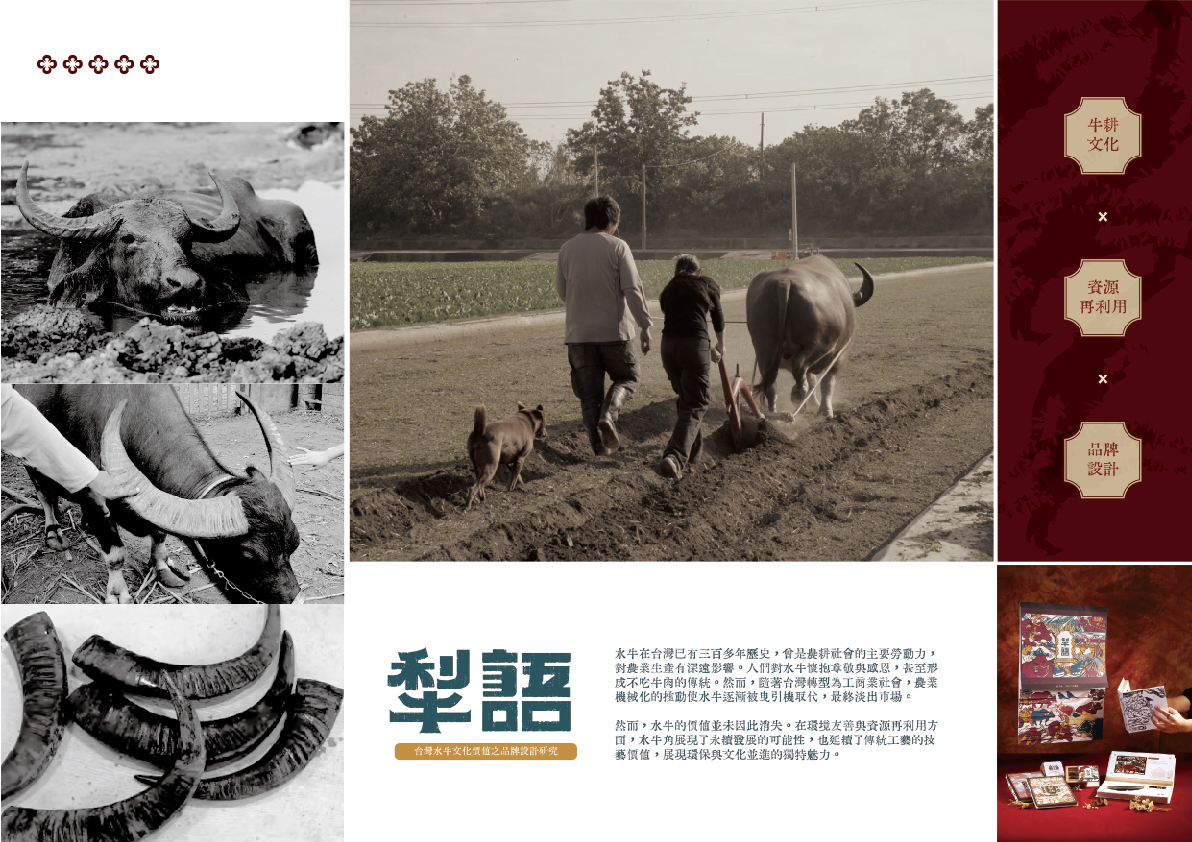
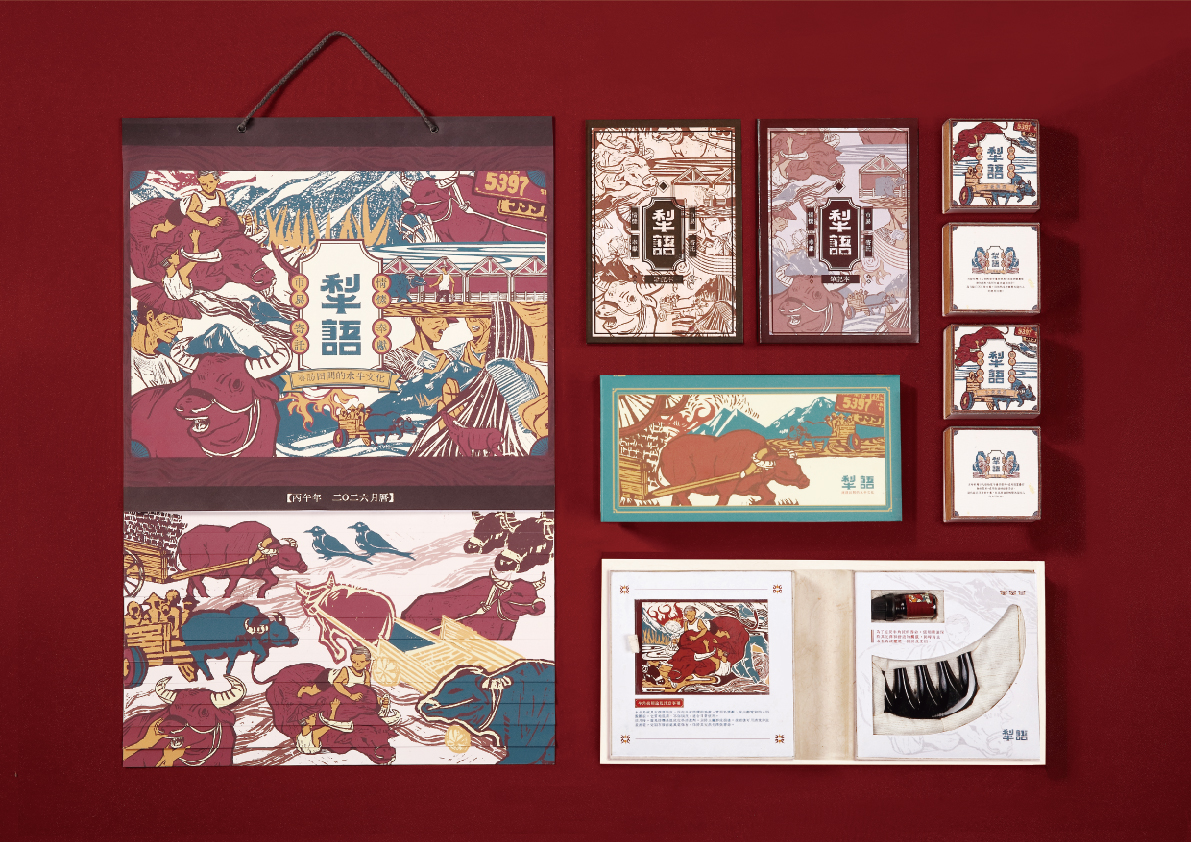
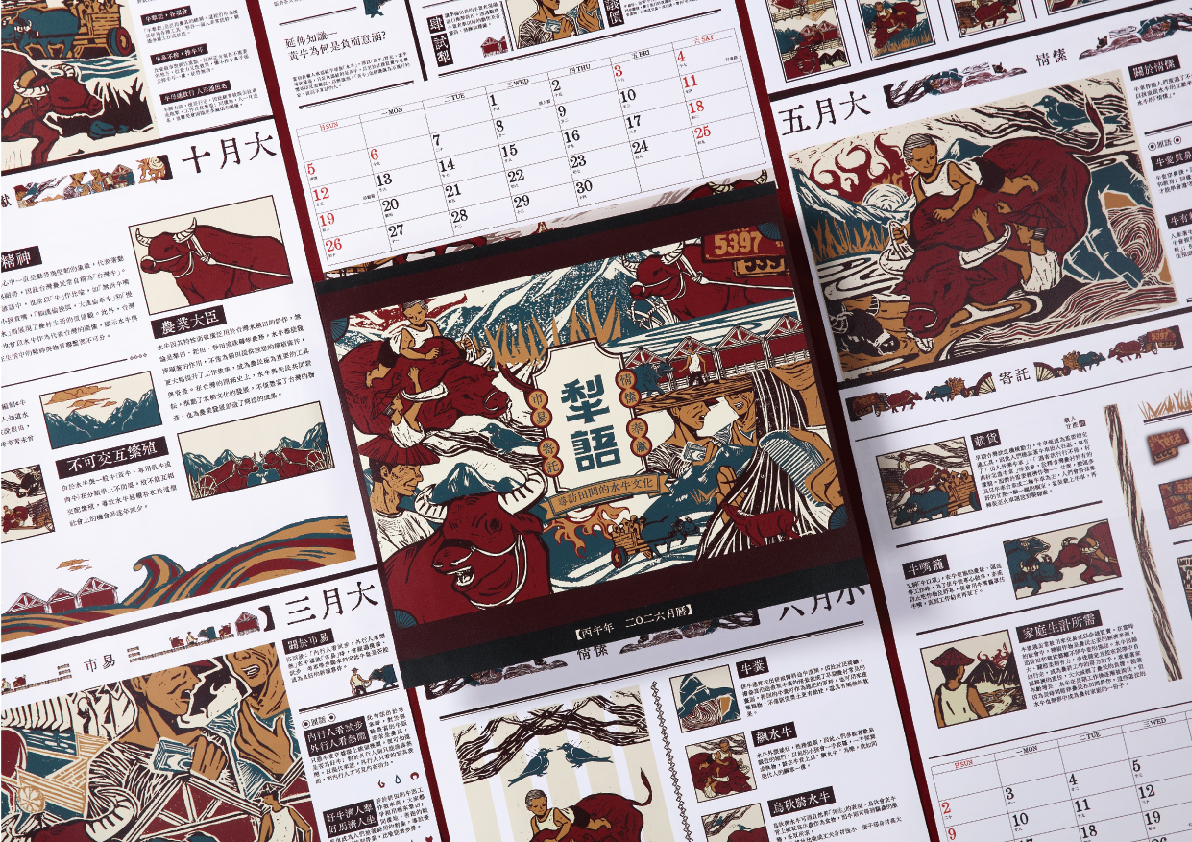
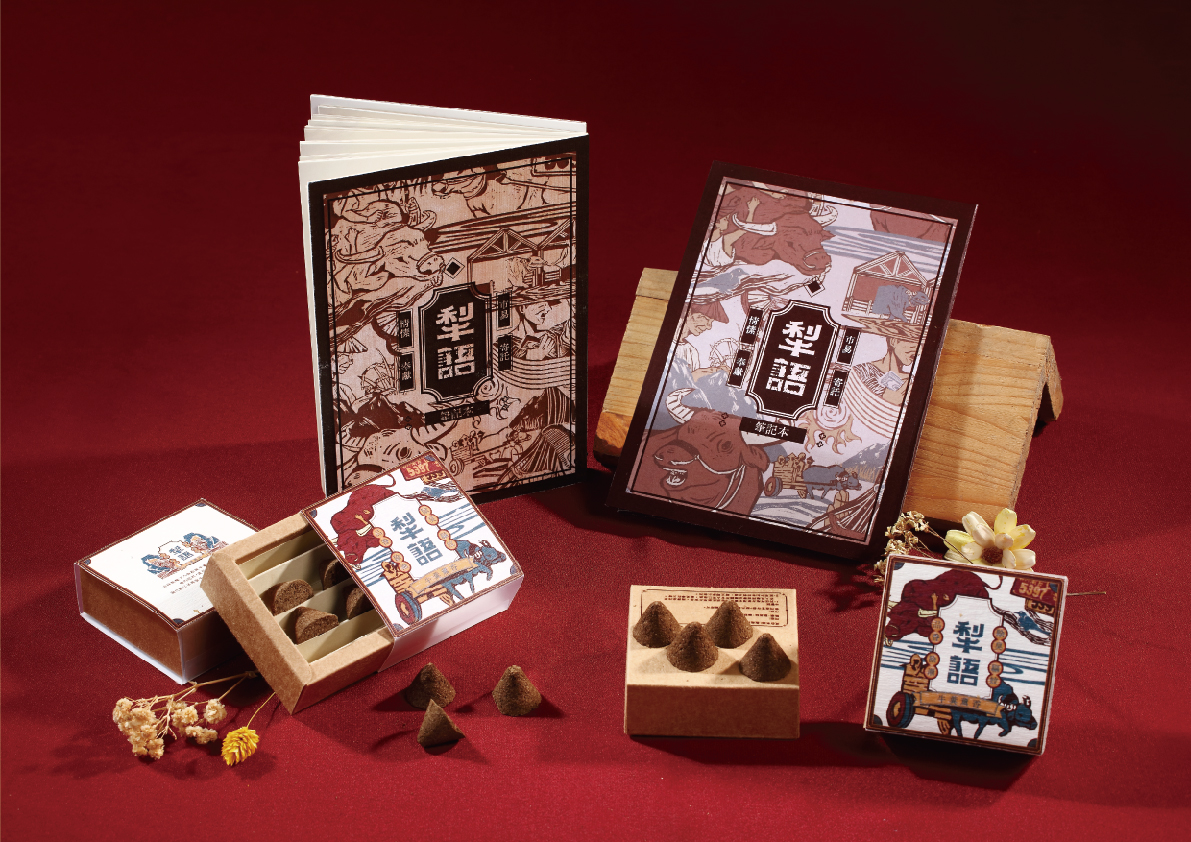
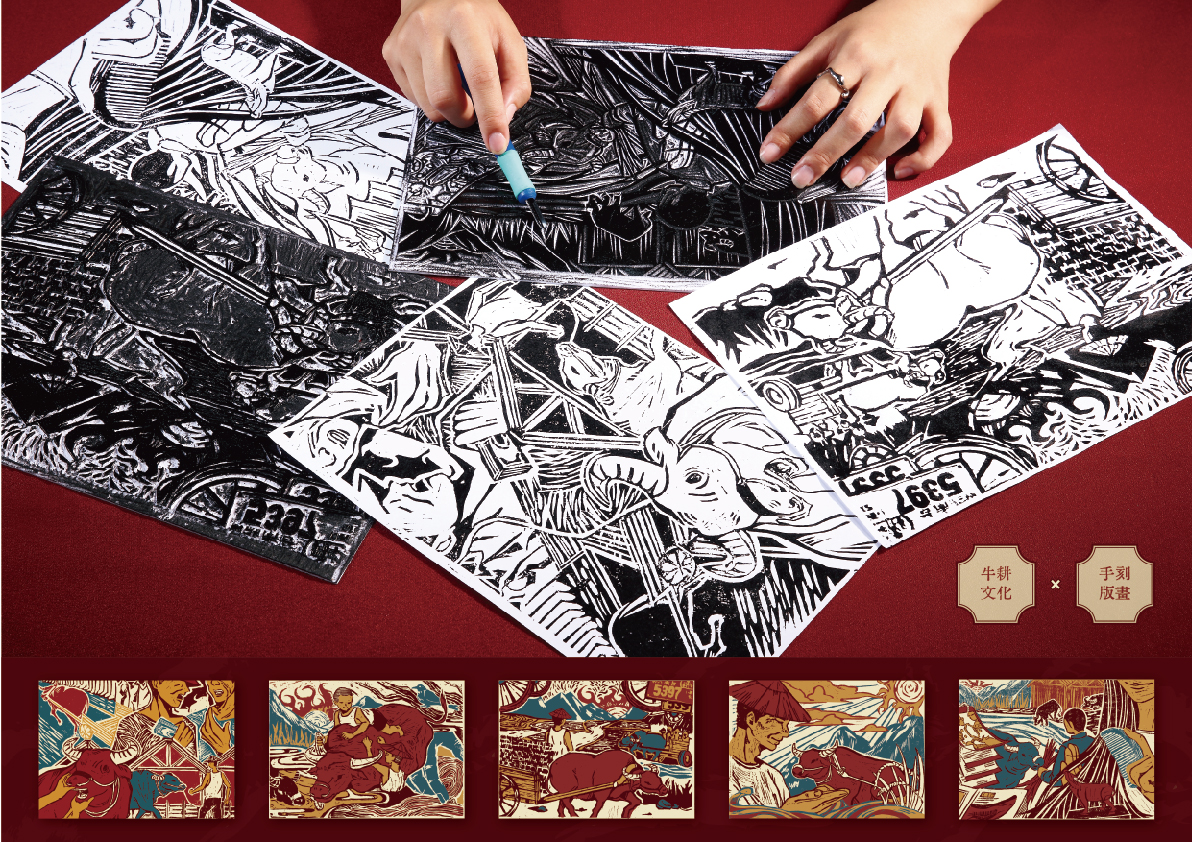
水牛在台灣已有三百多年歷史,曾是農耕社會的主要勞動力,對農業生產有深遠影響。人們對水牛懷抱尊敬與感恩,甚至形成不吃牛肉的傳統。然而,隨著台灣轉型為工商業社會,農業機械化的推動使水牛逐漸被曳引機取代,最終淡出市場。
然而,水牛的價值並未因此消失。在環境友善與資源再利用方面,水牛角展現了永續發展的可能性,也延續了傳統工藝的技藝價值,展現環保與文化並進的獨特魅力。
本研究透過設計水牛角梳包裝、月曆、筆記本及牛糞薰香來推廣牛耕文化。水牛角梳包裝傳達傳統與現代交織的氛圍;月曆與筆記本融入水牛歷史知識,讓人們在日常使用中回顧並學習水牛對台灣農業的貢獻;牛糞薰香則透過創新設計,改變人們對牛糞的既定印象,賦予其新的價值。我們期望透過這些設計,讓現代社會重新認識台灣在地牛耕文化。
Li-Yu
Water buffaloes have a history of over three hundred years in Taiwan, once serving as the primary workforce in agrarian societies and profoundly influencing agricultural production. They were revered and respected, even leading to a tradition of not consuming beef. However, as Taiwan transitioned into an industrial society, the mechanization of agriculture gradually replaced water buffaloes with tractors, causing them to fade from the market.
Nevertheless, their value persists. In terms of environmental friendliness and resource reuse, water buffalo horns demonstrate the potential for sustainable development, preserving traditional craftsmanship and cultural values, showcasing a unique charm that integrates environmental protection and cultural heritage.
This study promotes buffalo plowing culture through the design of buffalo horn comb packaging, calendars, notebooks, and incense made from buffalo dung. The buffalo horn comb packaging conveys an atmosphere where tradition meets modernity; calendars and notebooks incorporate historical knowledge about water buffaloes, encouraging people to reflect on and learn about their contributions to Taiwanese agriculture in their daily use; buffalo dung incense, through innovative design, changes people's established impressions of buffalo dung and gives it new value. Through these designs, we aim to reintroduce Taiwan's local buffalo plowing culture to modern society.
台南應用科技大學
(四年級)
徐若珊
台南應用科技大學
(四年級)
周慈恩
台南應用科技大學
(四年級)
曾心儀
台南應用科技大學
(四年級)
高藝庭
台南應用科技大學
(四年級)
丘恩
台南應用科技大學
(四年級) 指導老師 陳維翰